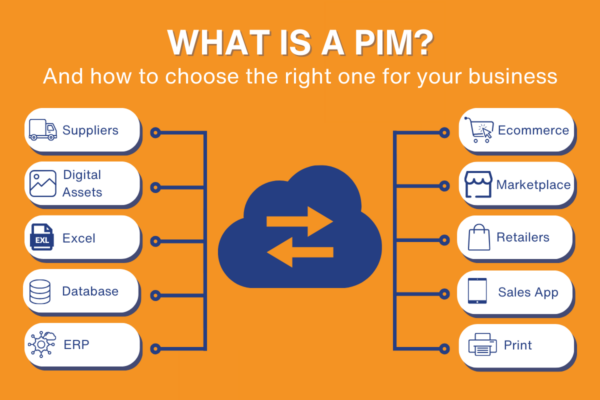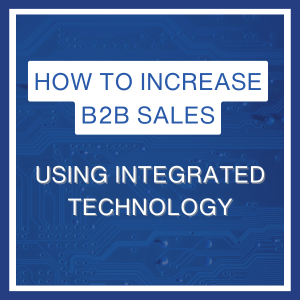What is a PIM? And how to choose the right PIM software for your business
PIM (Product Information Management) is a vital tool that stands at the heart of modern commerce, ensuring product data is accurate, consistent, and easily accessible.
Whether you’re a small business, or a large enterprise. Understanding the role and benefits of PIM can transform how you handle your product data.
This blog post will explore the essentials of PIM, its key functions, who benefits from it, and how it integrates with other business systems.
We will also explain how you can select the right PIM software for your business.
What is a PIM (Product Information Management)?
Product Information Management, or PIM, is a system that helps businesses manage and centralise their product data. It’s like a digital library where every detail about a product is stored. This would include descriptions, dimensions, prices, images and more. A PIM makes it easier for companies to keep their product data organised, up-to-date and consistent across all sales and marketing channels.
What is the function of a PIM?
The primary function of a PIM is to serve as a single source of truth for all product information. It allows businesses to collect, manage, and enrich their product data, streamline the process of distributing it to various sales and marketing platforms, and ensure accuracy and consistency. This centralised data management helps to improve efficiency, reduces errors, and enhances the customer experience by providing complete and accurate product information.
Who uses PIM?
PIM systems are used by a wide range of businesses, from small ecommerce startups to large multinational corporations. Any business that deals with a significant number of products and needs to distribute product information across multiple channels can benefit from using a PIM. This includes manufacturers, distributors, retailers, and ecommerce businesses.
Why do distributors need a PIM?
Distributors particularly need a PIM because they handle vast amounts of product information from various sources. A PIM helps them centralise and standardise this information, making it easier to manage. It ensures the product data they share with retailers and on their ecommerce platforms is accurate and consistent. For product distributors, this level of accuracy and reliability is crucial for maintaining good relationships with suppliers and providing a positive customer experience to their retailers.
Do I need both a PIM and an ERP?
While PIM and ERP (Enterprise Resource Planning) systems may overlap in some functionalities, they serve different purposes. An ERP system manages a businesses resources, including finance, supply chain, operations, reporting, manufacturing, and human resource activities. A PIM, on the other hand, focuses solely on managing product information. Having both a PIM and an ERP can provide a more comprehensive solution, where the ERP handles business operations and the PIM ensures your product information is managed effectively.
How do I choose the right PIM software?
Choosing the right PIM software provider is crucial for the success of your product information management strategy. Here are a few factors to consider:
-
Functionality
Functionality
When evaluating a PIM, it’s crucial to assess whether it aligns with your company’s specific requirements. Look for a system that not only allows for efficient data management and enrichment but also offers robust distribution capabilities. This includes the ability to seamlessly update and share product information across various channels and marketplaces, ensuring your data remains consistent and accurate wherever it appears. Advanced search functionalities, bulk editing options, and customisable data templates can greatly enhance your team’s productivity and data quality.
-
Integration
Integration
The ability of a PIM to integrate with your current technological ecosystem is a key consideration. A good PIM should seamlessly connect with your ERP (Enterprise Resource Planning) system, CRM (Customer Relationship Management) tools, ecommerce platform, mobile order taking app and any other software your business relies on. This integration capability ensures that product information flows smoothly between systems, reducing manual data entry and the potential for errors. Additionally, consider how the PIM handles data from suppliers and to distributors, as well as its compatibility with various data formats and standards.
-
Usability
Usability
The user experience offered by a PIM system can significantly impact its effectiveness. Choose a PIM with an intuitive, user-friendly interface that your team members can easily navigate, regardless of their technical expertise. Features such as drag-and-drop functionality, visual data management tools, and straightforward workflow processes can facilitate quicker adoption and more efficient daily operations. A PIM that is cumbersome or complicated to use can lead to lower productivity and a higher likelihood of data errors.
-
Scalability
Scalability
As your business grows, your PIM system should be able to scale accordingly. Opt for a solution that can comfortably accommodate an expanding range of products, increasingly complex data structures, and a growing user base without compromising performance. Scalability also means the PIM can adapt to emerging business needs, such as entering new markets or supporting additional languages and currencies. Assess the system’s architecture and enquire about upgrade paths to ensure it can evolve with your business.
-
Support
Support
The level of support and training a PIM provider offers is critical to the successful implementation and ongoing use of the system. Evaluate the provider’s support services, including the availability of training materials, user communities, and direct support channels such as email, chat, and phone. A provider committed to your success will offer comprehensive onboarding processes, detailed documentation, and responsive customer service to resolve any issues that arise. Also, consider the provider’s track record for software updates and how they handle customer feedback in product development.
SkooCloud – PIM (Product Information Management) & DAM (Digital Asset Management) in one tool
SkooCloud from Aspin combines the functionalities of both PIM and Digital Asset Management (DAM), allowing product distributors and brands to manage, not only their product information, but also all related digital assets in one system.
With user-specific permissions, SkooCloud makes it easy for you to share the right product data with the right people.
If you would like to know more about how SkooCloud could help your business, call us on 01794 500 200, or email us at [email protected].

Related Articles




